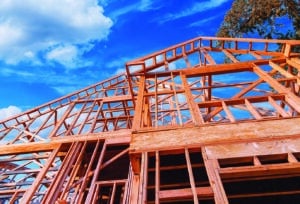Builder confidence plunged in July as high inflation and increased interest rates stalled the housing market by dramatically slowing sales, buyer traffic and housing starts according to new data from the National Association of Homebuilders.
The NAHB’s measure of homebuilder confidence, the NAHB/Wells Fargo Housing Market Index, fell 12 points year-over-year, its lowest ebb since May 2020 and the largest single-month drop in the history of the HMI, except for the 42-point drop in April 2020, as the COVID-19 pandemic’s full force hit America.
“Production bottlenecks, rising home building costs and high inflation are causing many builders to halt construction because the cost of land, construction and financing exceeds the market value of the home,” NAHB Chairman Jerry Konter, a developer from Savannah, Georgia, said in a statement. “In another sign of a softening market, 13 percent of builders in the HMI survey reported reducing home prices in the past month to bolster sales and/or limit cancellations.”
A day after the NAHB released its builder confidence data, overall housing starts reported by the federal Department of Housing and Urban Development and the Census Bureau fell 2 percent in June after rising the previous month. If builders continue on this pace for the rest of the year, 1.56 million housing units will have started construction during 2022, adjusting for seasonality.
Part of the problem, National Association of Realtors Chief Economist Lawrence Yun said, is down to rising mortgage rates knocking some buyers of new single-family homes out of the market.
“There have been frequent reports of contract cancellations by buyers of newly constructed homes because they had signed a contract at the early stage of construction when the mortgage rates were low,” Yun said in a statement. “But, as the completion of construction has taken longer, the home now requires financing at a much higher mortgage rate. Interestingly, the days on market since completion remains reasonably swift at 2.4 months. The norm is around 3 to 4 months. Homebuilders have been facing supply-chain disruptions and many homes started multiple months ago have yet to be completed. Homebuilders are waiting to see how these homes will sell before starting new construction.”
Single-family construction dropped off while multifamily construction boomed, the former falling by 8.1 percent to the lowest single-family starts pace since June 2020 and the latter jumping 10.3 percent.
“While the multifamily market remains strong on solid rental housing demand, the softening of single-family construction data should send a strong signal to the Federal Reserve that tighter financial conditions are producing a housing downturn,” NAHB Chief Economist Robert Dietz said in a statement. “Price growth will slow significantly this year, but a housing deficit relative to demographic need will persist through this ongoing cyclical downturn.”
On a regional and year-to-date basis, combined single-family and multifamily starts in June were 4.4 percent lower in the Northeast, 4.7 percent higher in the Midwest, 11.1 percent higher in the South and 0.4 percent lower in the West. Year to date, permits are 5.1 percent lower in the Northeast, 2.5 percent higher in the Midwest, 2.9 percent higher in the South and 3.0 percent higher in the West.







